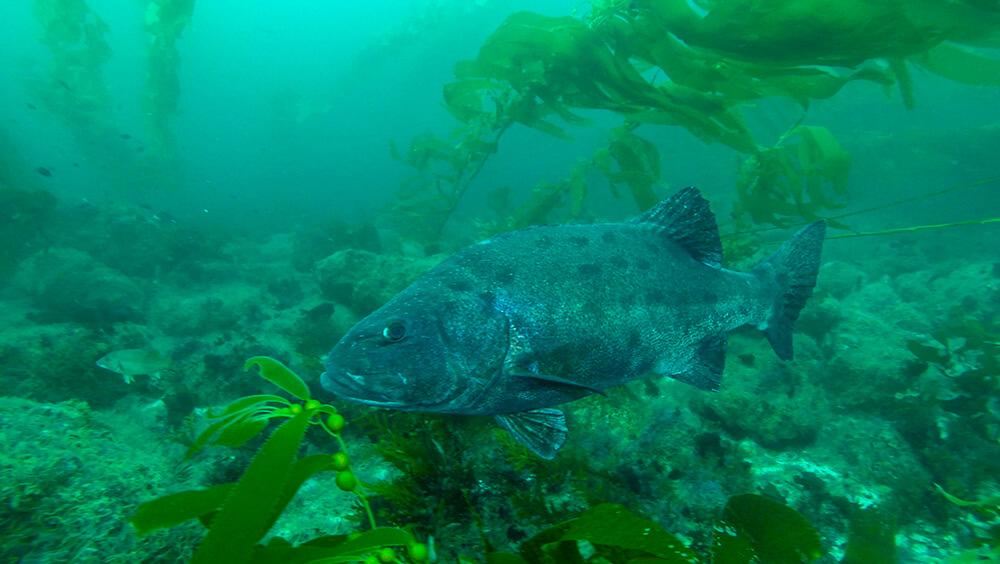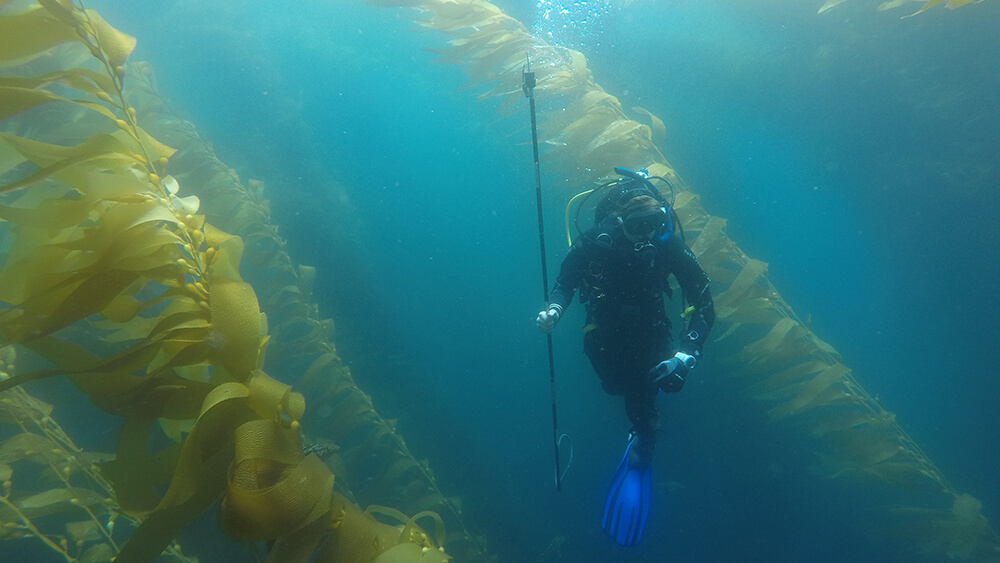Ecosystem Connectivity and Animal Movements

Although the offshore location of the sanctuary provides a buffer to sanctuary resources from human impacts and potential stressors, many species move between habitats inside and outside the sanctuary. Understanding which species and habitats exhibit high connectivity to the mainland is critical to proper management. It is well known that large pelagic species such as whales, sharks, dolphins, seabirds, and tuna are known to travel large distances between habitats, however many smaller species also move between the islands and mainland. Evidence from ongoing projects suggests connectivity persists as far south as Mexico to as far north as Northern California. Sanctuary research staff are currently assessing these scales of connectivity through a variety of technologies and partnerships.
Since 2000, the sanctuary has worked on the West Coast Observations project monitoring migratory fish species in the region. The 13 sub-surface moorings deployed in sanctuary waters around the Channel Islands continuously record tracking data on tagged species including sharks and large predatory fish. Twice a year sanctuary divers retrieve VR2W acoustic telemetry receivers and temperature recorders and swap them out with a new set of equipment to download and analyze the data. A joint project between the sanctuary, UC Santa Barbara's Partnership for the Interdisciplinary Studies of Coastal Oceans (PISCO), and the Southern California Acoustic Telemetry Tracking Network (SCATTN), these data have helped researchers develop models of currents in the region and gain a deeper understanding of ecological phenomena. By utilizing this existing technology in the region, sanctuary researchers can track species as they move throughout the region. Datasets from the acoustic receivers have not only highlighted the high degree of connectivity between the islands and the mainland, but also allowed researchers to look at related movement topics and begin to answer specific questions.
In addition to acoustic telemetry, the sanctuary works with partners on a number of additional projects looking at connectivity in species such as white sharks, basking sharks, and giant sea bass. This includes the use of satellite telemetry on large pelagic species of concern, deployment of drop cameras, and using emerging technologies to identify individuals by their markings. These projects provide useful insights into species with poorly understood movements.

Video Transcript
What can grow to over seven feet long and weigh close to 600 pounds, and is a top predator in the kelp forest?
A giant sea bass!
Lucky divers in the Channel Islands National Marine Sanctuary can spot these behemoths between swaying kelp fronds.

